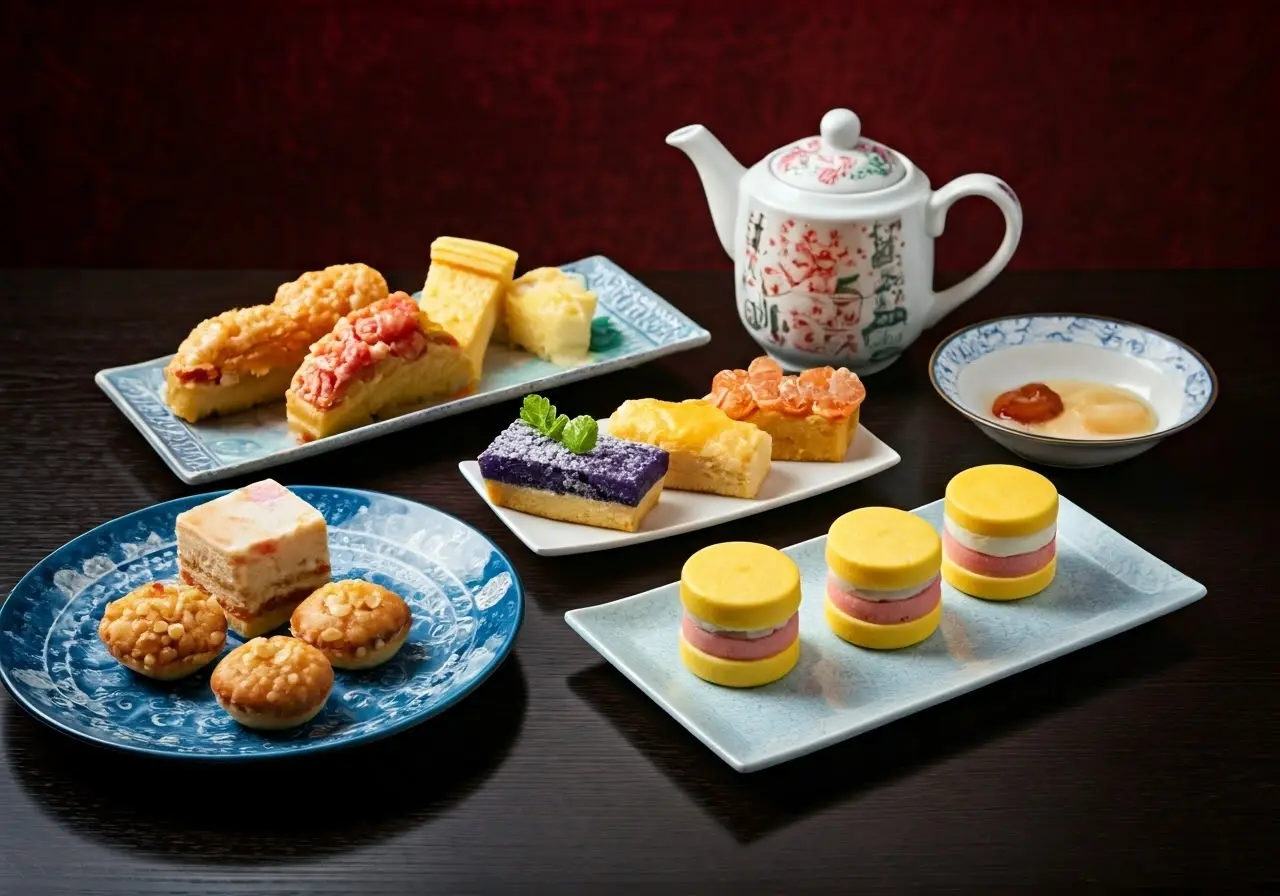Asian fusion desserts are a delightful blend of innovation and tradition, bringing together diverse ingredients and culinary practices. In Hong Kong, these desserts have gained popularity for their creative merge of local flavors with long-standing traditions. This FAQ blog will explore how these unique desserts are crafted and what makes them so captivating.
What Defines an Asian Fusion Dessert?
Asian fusion desserts combine elements from different culinary traditions. In the case of Hong Kong, they draw from local flavors like mango, matcha, and red bean, paired with Western techniques to create something unique. These desserts are more than just a simple mix of ingredients; they represent a harmonious blend of cultures, resulting in flavors and textures that surprise and delight.
The uniqueness of these desserts lies in their ability to transcend geographical boundaries while maintaining a connection to cultural roots. For instance, using traditional techniques such as steaming and baking along with contemporary twists like incorporating coconut milk and tapioca pearls gives these desserts a distinctive Hong Kong identity while appealing to a global palate.
Asian fusion desserts in Hong Kong are not just about flavor; they’re a reflection of its innovation-driven culinary scene. By seamlessly integrating traditional Asian ingredients with Western dessert concepts, these creations redefine the dessert experience, offering something truly exhilarating for both locals and visitors.
How Do Local Ingredients Enhance These Desserts?
Utilizing local ingredients, like fresh tropical fruits, gives these desserts their distinct flavors. Local spices and herbs also add depth, providing that familiar yet novel taste. For instance, the use of durian, a fruit beloved in many parts of Asia, in cheesecakes or tarts brings a rich, creamy texture complemented by the fruit’s unique aroma.
The incorporation of lychee, a popular fruit in Asian cuisines, adds a sweet and floral note that pairs exceptionally well with the richness of chocolate or the creaminess of panna cotta. This combination is a testament to how local flavors can elevate and redefine traditional dessert recipes.
Besides fruits, spices like star anise and ginger bring warmth and complexity to fusion desserts. Whether it’s a hint of spice in a caramel sauce or a fragrant note in a mousse, these ingredients highlight the depth of flavors characteristic of Hong Kong’s culinary scene.
What Role Do Traditional Hong Kong Techniques Play?
Traditional Hong Kong cooking methods, such as steaming and baking, are often used to give a new twist to traditional and classic items, ensuring the fusion desserts maintain a touch of authenticity. For example, steaming mango pudding in bamboo baskets not only retains the fruit’s vibrant color and flavor but also infuses it with a subtle hint of bamboo aroma.
Baking, a technique deeply rooted in Hong Kong’s love for rich and flaky pastries, is frequently employed in creating fusion desserts like matcha egg tarts. These tarts blend the crumbly texture of the pastry with the smooth, earthy filling of matcha custard, offering a delightful contrast in every bite.
These traditional methods allow a seamless fusion of other regional flavors and techniques. By combining old and new, chefs craft desserts that are not only innovative but pay homage to the heritage of Hong Kong’s culinary artistry.
Examples of Popular Asian Fusion Desserts in Hong Kong
Some popular fusion desserts include mango mochi, matcha egg tarts, and durian cheesecake. Each of these desserts showcases a meld of East and West, incorporating beloved local flavors with international dessert styles. Mango mochi, for instance, wraps the chewy texture of Japanese mochi around a succulent mango filling, offering a tropical twist to a traditional treat.
Matcha egg tarts are a modern take on the classic Cantonese egg tart, infused with the aromatic flavors of Japanese green tea. The rich, buttery crust cradles a silky matcha custard, creating a dessert that pays homage to its heritage while offering something uniquely contemporary.
Durian cheesecake combines the creamy texture of classic New York cheesecake with the distinctive, bold flavors of durian. This unlikely pairing results in a dessert that is both rich in flavor and aroma, catering to adventurous dessert lovers who seek new tastes that defy conventional boundaries.
Furthermore, black sesame crème brûlée and taro bubble tea tiramisu are examples of how fusion desserts can bridge cultural flavors with elegant presentation. The deep nuttiness of black sesame in a classic French dessert or the luscious layers of taro in an Italian tiramisu embody this exquisite blend of culinary influences.
Final Thoughts on Asian Fusion Desserts in Hong Kong
Incorporating local flavors with Hong Kong’s traditional dessert-making techniques creates a fascinating blend of old and new. These Asian fusion desserts reflect the city’s rich cultural tapestry and offer a delicious culinary adventure. Whether you’re sampling a twist on an old favorite or a completely new creation, these desserts highlight the creative possibilities when diverse culinary worlds collide.








Leave A Comment